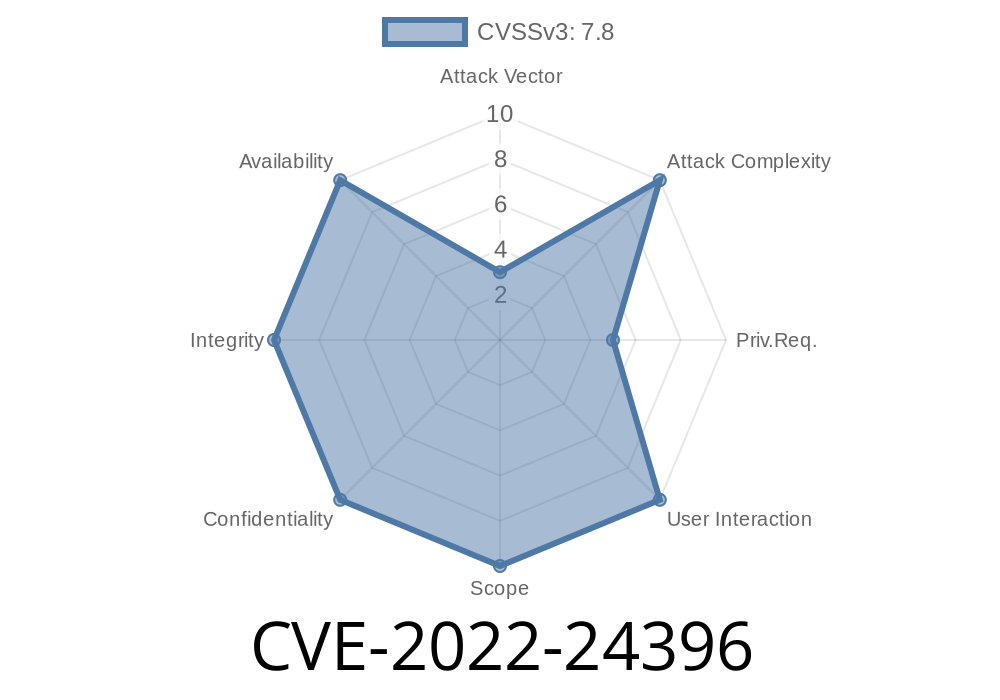CVE-2022-24396 is a security vulnerability that affects the Simple Diagnostics Agent (SDA) application, specifically versions 1. up to 1.57. This vulnerability allows an attacker to bypass authentication checks for privileged functionalities, which can lead to unauthorized access, data manipulation, and sensitive information disclosure.
The issue stems from the fact that SDA does not perform any authentication checks for functions accessed through localhost on http port 3005. Consequently, this could grant an attacker with local access to the machine the ability to perform administrative actions or other privileged operations without proper authentication.
Perform unauthorized actions that could disrupt the regular operation of the application.
Given the scope of privileges an attacker could potentially obtain, it is critical to address this vulnerability and apply necessary security controls to prevent exploitation.
Code Snippet
Below is an example of a code snippet that demonstrates the lack of authentication checks in SDA version 1.57 when accessing localhost on http port 3005:
const express = require('express')
const SDA = require('simple-diagnostics-agent')
const app = express()
app.use(SDA())
app.listen(3005, 'localhost', () => {
console.log('Simple Diagnostics Agent listening on port 3005!')
})
In the code above, there are no authentication measures enforced when the application listens on port 3005. This allows an attacker to directly access the SDA's administrative functions without proper permissions.
Exploit Details
An attacker with local access to a vulnerable SDA instance could exploit this vulnerability by sending a carefully crafted request to the localhost, gaining access to protected functionalities and data.
For instance, one could use a command similar to the following
curl -X POST --data "action=read_config" http://localhost:3005/api
This command sends a request to the SDA's API endpoint, instructing it to read its configuration file. Since there are no authentication checks performed, the request will be processed, and the sensitive configuration data exposed.
References and Resources
For more information on CVE-2022-24396 and the impacted versions of Simple Diagnostics Agent, you can refer to the following official resources:
- NVD - CVE-2022-24396
- Simple Diagnostics Agent GitHub Repository
To protect your systems from CVE-2022-24396, you are advised to
- Update your Simple Diagnostics Agent installation to the latest version (1.58 or later) as soon as possible
Ensure that local access to your server and applications is restricted to authorized personnel only
- Regularly monitor and review logs for signs of unauthorized access and act promptly to address security concerns.
By taking these steps, you can minimize the risks associated with this vulnerability and build a robust security posture for your applications and systems.
Timeline
Published on: 03/10/2022 17:46:00 UTC
Last modified on: 06/21/2022 22:15:00 UTC
